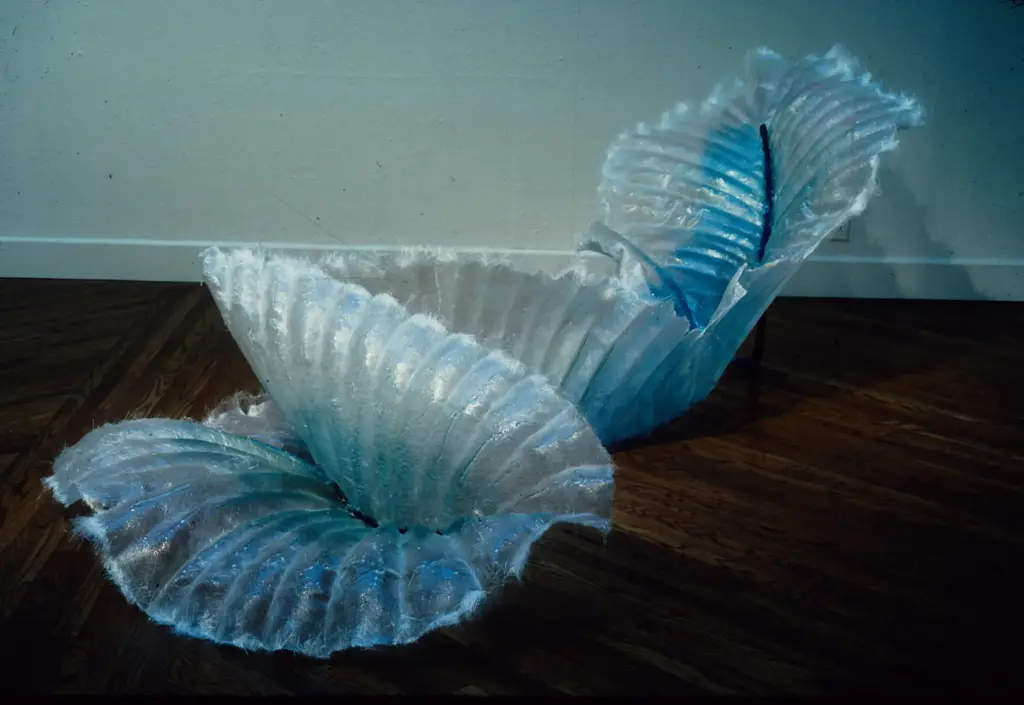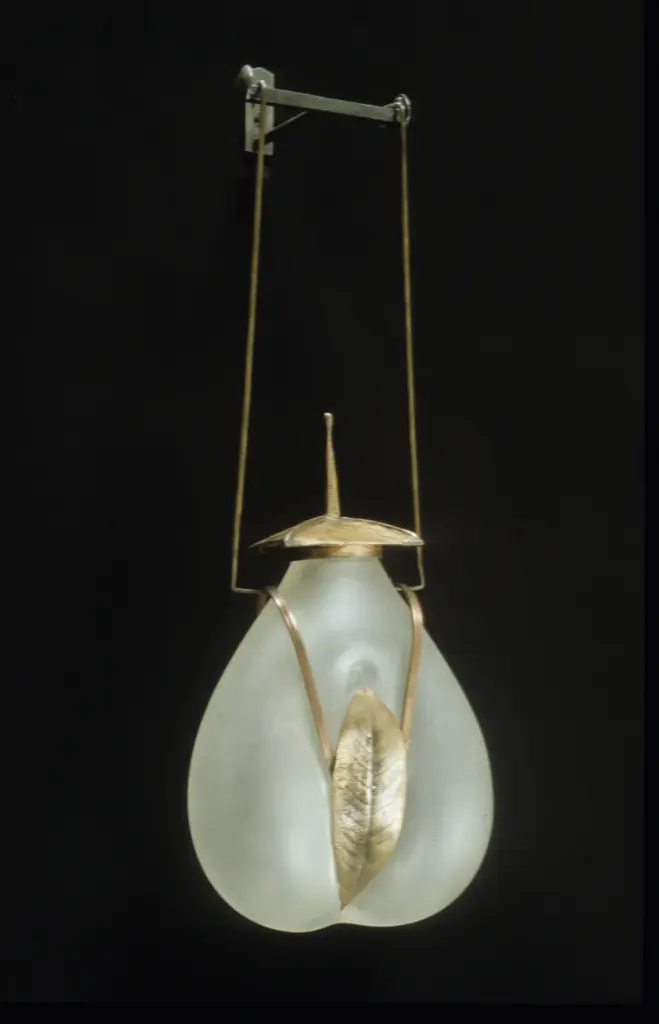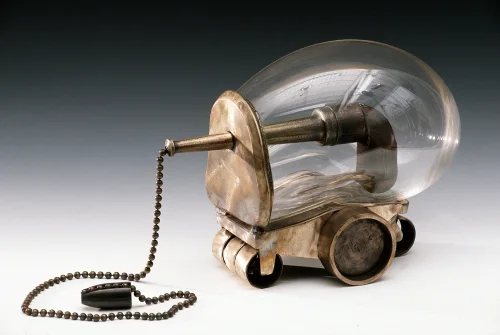Artistic Innovation and Technique
Bella Feldman was a true innovator in her sculptural practice, renowned for her groundbreaking and visually striking use of diverse materials throughout her career. From her early explorations with fiberglass to her signature combination of industrial steel and blown glass, she consistently pushed the boundaries of traditional sculpture.

Mae (1981) showcases the material properties of fiberglass and resin, such as transparency and moldability, that contributes to her now signature aesthetic.
In the late 1970s, Feldman dedicated a significant period to working with fiberglass. This exploration allowed her to create layered, often translucent forms that possessed a unique lightness and ethereal quality. Her techniques in fiberglass involved layering the material to achieve varying degrees of opacity and to manipulate the way light interacted with the sculptures. These works often featured flowing, organic shapes, demonstrating her early interest in creating forms that seemed both fragile and resilient. This exploration of translucency and layered form can be seen as a precursor to the delicate nature of the glass she would later incorporate into her steel structures.

The visual language that emerged from Feldman’s technical innovations is equally distinctive. Her forms often balanced organic, biomorphic shapes (particularly in the glass and earlier fiberglass) with the rigid geometry of the steel frameworks. This interplay created a sense of visual tension and dynamism. The use of color in her glasswork, ranging from vibrant hues to subtle translucence, added another layer of complexity and emotional resonance to her pieces.

Bella Feldman’s innovative approach to materials and techniques not only defined her unique artistic voice but also undoubtedly inspired subsequent generations of sculptors to explore unconventional combinations and push the boundaries of what sculpture could be. Her mastery of diverse media, and her ability to create such compelling dialogues between them, remains a testament to her artistic ingenuity.